Collective Action During the Pandemic
Author(s)
Aylin Kuryel, Begüm Özden Fırat
"We were in the streets for the Feminist Night March on 8 March, exactly three days before the first Covid-19 case was officially declared in Turkey..." Read the translation of an essay originally published in Turkish on 1+1 Forum, 30.04.2020.
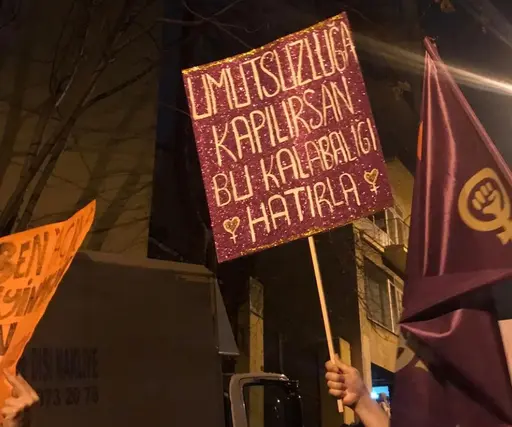
We were in the streets for the Feminist Night March on 8 March, exactly three days before the first Covid-19 case was officially declared in Turkey. The protest, banned by the Governorship of Istanbul because “Taksim Square and Istiklal Street are not among announced places for protests in accordance with the law no. 2911,” started slowly, with small groups gathering on Sıraselviler Street. We had our eyes set on the police barricade erected at the entrance to the street; we were all ears for the engine of the anti-riot water cannon parked behind us. A placard read, “Patriarchy is deadlier than Corona.” During our first minutes in the crowd, we wondered, with the virus in mind, “Should we cover our mouths with our jackets?” Yet this slight anxiety dissipated into shouted slogans in no time: “We are not leaving the nights, the streets, and the squares!” We were not aware that this would be the last protest we would join for some time. But protests in Turkey have long been overshadowed by anxiety about the near future, and one of the banners crystallized this feeling: “If you feel despair, remember this crowd!”
The feminist movement in Turkey is one of the few social movements that keeps taking to the streets despite the systematic oppression it faces. The word “despair” written on the banner referred partially to this political climate—a reminder that our “crowd” showed up in spite of its temporary and forceful expulsion from public space. It is clear that we will remember the Feminist Night March during this pandemic, while hopelessness prevails and the meaning of “the crowd” has been fundamentally transformed. Although remembering that angry and glowing multitude on 8 March still helps us to maintain a sense of solidarity, the idea of seeing, approaching, and being in a crowd seems to generate a rather new—yet freakishly familiar—sense of danger. When “physical distancing” has become an essential aspect of our daily lives, when governments announce a state of emergency one after another, when borders are closed and people who have the means shut themselves in their houses, the question of who can and who must be in the streets remains a burning one. A glance at the street suffices to refute the claim that the virus affects everyone regardless of class and social difference, that “we are all in the same boat.”
In this article, we ask questions pertaining to what a crowd is and does, what “distance” means, and what forms of protest and collective action might look like during and after this crisis, which intensifies existing inequalities and limits the possibilities for bodies to gather in public space. Unlike the totalizing perspective exemplified in Giorgio Agamben’s perception of social distancing as a “trap” that strengthens fascism and the surveillance state, our aim here is to contemplate not the distance itself but its unequal distribution, as well as the ways in which social solidarity and collective action can be maintained despite physical distance.[1]
Nowadays, plenty of questions swarm around us, some of which we will touch upon below: When the gathering of the bodies is restricted, what else can spill over into public space? How does corporeal political memory manifest through the echoes of the slogans shouted at home or from the balcony; through the burning feeling of hands after moments of collective applause from the windows; through the honking that has replaced the slogans; through the hegemonic appearance of masks in public space, masks that were considered not so long ago to be a crime; and through the impossibility of standing shoulder-to-shoulder (or “legs on shoulder”) at a public demonstration?[2] What is the sustainability and sphere of influence of online protests and digital strikes without the physical togetherness of bodies? If the protest draws its power from intervening in the course of events, to what extent are these forms able to stop, suspend, and sabotage?
We cannot foresee how long this period will last, or what impacts it will have on politics, the public sphere, and our rhythms of thinking and acting. Yet the questions that arise in response to it regarding how to overcome the forceful distancing of bodies, the blockage of channels of politics and desire, and the limitations of organizational models are not new. One of the aims of contemporary authoritarian populist regimes is to prevent the majority of the population and their demands from becoming publicly visible. The conditions of a “normalized state of emergency,” with crowds banned from public space and bodies and ideas isolated from each other, are familiar features of daily reality in Turkey and elsewhere. Hence, we will try and understand the present in continuity with the control and resistance tactics that were already in use before the pandemic, while searching for traces of the crowd both as a visible approach to reclaiming public space and as an invisible entity that organizes social reproduction and care.
When people occupy squares and streets, potential becomes visible. When crowds are dispersed, however, questions, limitations, and problems arise: Where is that crowd now? How are we going to get organized? How will we get together again? Those who have been to a formation like the Gezi Park uprising know that afterward, every protest will be compared to the sensation created by that first crowd. It is not a matter of quantity but of quality, of sensation and embodiment. No other action was “crowded enough” in terms of ambiance or attitude. The crowd was the site of an incompatible difference and strangeness, as well as the locus of our common destiny; it was evidence of the puissance and elegance of people gathering and acting together without knowing each other, temporarily undoing social distances. We kept waiting for the crowd to reappear. We longed to become the crowd.
Over time, neighborhood and community assemblies replaced the anonymous and ambiguous crowds of Gezi and other occupation movements. This transformation in scale and sphere tested the limits of the political within the local. As the scale got smaller, the number of participants and distances bridged decreased. Local initiatives served as excuses to get together with familiar faces rather than places to encounter strangers. The ever-changing face of the crowd gave way to existing proximities within communities.
The slogan for the third anniversary of the Gezi protest in 2016 was #WeAreTogether #WeAreHere. Taksim Solidarity made the following statement: “We are here to emancipate our squares, parks, streets, living spaces, and our lives: We are in Taksim! We are in Gezi! We are here! We are together!”[6]About a month later, when the 14th Istanbul Pride was banned by the Governor of Istanbul for “security reasons,” the Istanbul LGBTİ+ Pride Week Commission declared, “We are dispersing!” Their public statement read, “Police forces have told the people attempting to read a press statement during Trans Pride March to voice their legal and political demands: ‘Please disperse and allow life to go back to its normal course.’ We are obeying this call: On Sunday, 26 June we will disperse to every single corner of Istiklal Avenue, we are reuniting with each other on every street and avenue in Beyoğlu. Instead of living a life that is imposed on, a life that normalizes violence, oppression, and denial; we are living the life we chose, the life in which we exist with pride and honor and we are ‘Letting life go back to its “normal” course’ by: DISPERSING, DISPERSING, DISPERSING.”[7] The committee’s call for dispersing was a brave move that acknowledged the fragility of the crowd; by fragmenting and decentering it, the call turned the crowd into a ghost that could threateningly and unexpectedly appear everywhere, at any time. If we are not here, we can be everywhere!
Rethinking Collective Action
Although there is continuity between the violence exerted on collective actions before and during the pandemic, the period we are in enables the government to justify and perpetuate the state of exception that they claimed would be temporary, making the search for alternative forms of collective action even more urgent. We have recently witnessed similar political pressures in other countries, where massive demonstrations have been replaced by creative solutions to the restriction of the right to protest. In some of these instances, organizers have used image and sound to become visible through other means. In 2015, the first “hologram protest” was organized in Madrid against the “gag law” that criminalized public demonstrations there. During the protest, images and voices of thousands of people from various countries were converted into holograms that filled the streets of Madrid.[8] Similarly, during the state of emergency in France in 2015, in which all protests and activities—including the planned climate march in Paris—were canceled, activists placed eleven thousand pairs of shoes in the Place de la République.[9] Such actions reveal the potential and limitations of the dispersed crowd; they also fill empty public space with spectral traces of the bodies that would otherwise congregate there, partially circumventing the restrictions and providing inspiration for us today.
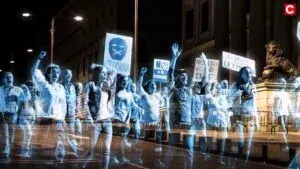
Still, the crowds have searched for ways to remain visible. In the beginning of April, the group Seebrücke (Seabridge) organized a protest in Germany, entitled Leave No One Behind, in which they left pairs of shoes on the streets in solidarity with migrants, some of the most invisible victims of this crisis.[11] Later that month, a human-less action took place in front of the US Capitol building in which the “crowd” comprised a thousand placards placed on the lawn, demanding protective equipment for healthcare workers.[12] In Hong Kong, protesters’ avatars met each other and chanted slogans in computer games.[13]
In other cases, more familiar forms of protest are maintained as a rejection of state restrictions. At the end of March, in Berlin, approximately 200 people organized a public demonstration for migrants stuck at the Turkish-Greek border. A placard read, ; protesters shouted, “Our doors are open for migrants.” Masked protesters stood in pairs and left two meters between each other. Several weeks later, approximately 300 people took to the streets in Berlin, this time without any physical distance, against the increasingly “authoritarian regime.” In other protests in the city in the following weeks, the profile of the participants seems to shift to the far right.
One of the most striking images of the new protests in this period of dispersal came from Israel, where Black Flag protesters came out against Netanyahu in Tel Aviv’s Rabin Square in April, standing on individual spots that had been marked by the police in advance to ensure physical distancing. Police also made it mandatory for the protest organizers to distribute masks.[15] It was both a disturbing image, evoking perfectly ordered military crowds, and exciting proof that it remains possible to gather en masse in these times. On the other hand, the protests in the banlieues of France showed once more how physical distancing is enforced differently depending on race and class. Residents gathered in the streets in April to protest ongoing police violence there, which has continued during the pandemic.[16] While both the rubber bullets used by police and the protesters’ barricades made of garbage bins were already common in these areas, pandemic measures seemed to increase the intensity and apparent legitimacy of police violence.
During the pandemic, with ongoing social and political conflicts amplified and more visible, it is not only the invisible urban poor claiming public space. In the United States, Brazil, and elsewhere, some groups of protesters are in fact supported by their “Covid-denier” governments. While millions of people in Brazil continued to bang pots and pans from the balconies against president Bolsonaro’s approach to the pandemic, Bolsonaro—who described the virus as an illusion created by the media and the reactions to it as hysteria—participated in demonstrations against closures in April, without a mask and while coughing.[17] Protesters demanded an end to the lockdown measures executed by governors and called for the army to intervene, reflecting a tension between central and local administrations that is gradually becoming more evident in many parts of the world.
In the US, a number of churches continued to hold ceremonies in spite of physical distancing measures put in place by the state. Further, large groups consisting substantially of Trump supporters organized street actions against the quarantine in many states, including Michigan, Minnesota, Virginia, California, and Kentucky. These protesters, including pro-gun groups, argued that economic crises are more deadly than the coronavirus, carrying placards and chanting, “Let us work.” They claimed that social distancing was communism. These crowds strike us once again with the dilemma that in this period of history, the demands and tactics of workers have been appropriated by right-populist discourse. These scenes should not be surprising in the USA, where Bernie Sanders, the progressive Democratic presidential candidate, was forced to withdraw from the primaries during the pandemic, at a time when over 20 million unemployment benefit applications had been submitted in a few weeks. In one of the protests, a woman holding a placard that read “Land of the Free” leaned out of the passenger’s window and shouted “Go to China!” at a healthcare worker who stood in front of her car. This will surely become an iconic moment of the conflicts that currently construct public space.[18]
Recently, we have also encountered online and individualized versions of more traditional actions, which oppose the prevailing conditions of isolation during the pandemic without insisting upon the usual forms of collectivity. For example, Fridays for Future underlined the direct relationship between the pandemic, ecological destruction, and climate crisis with a video protest on Zoom in which everyone wrote their own slogans on placards.[19] Greta Thunberg similarly called for a #digitalstrike, asking the participants of #ClimateStrikeOnline to share their own slogans and videos. Extinction Rebellion has invited people to hang banners from their windows and to make stencils in the streets whenever and wherever it is possible to go out. Climate activists hold weekly digital meetings, reminding us that even though public focus has shifted from the climate crisis to Covid, the crisis we experience today is an interconnected, systemic, and long-range one. Other forms of collective action carry on with minor adaptations: phone zaps targeting elected officials, car demonstrations in front of refugee camps, extended sidewalks created by neighborhood residents, planting in public spaces, projections onto exterior walls, and so on.
Voices from Below and Above
In recent weeks, crowds have resurfaced in Turkey in rather unexpected ways. We have encountered a peculiar form of crowd, for instance, when those who were placed in quarantine after their return from the umrah clashed with the police while trying to escape. The dangerous and uncanny “crowd” manifested once more when people had to run to the streets for shopping when the first weekend curfew was announced just before midnight. There were also small street protests against the unaccepted resignation of Minister of the Interior Süleman Soylu, due to his role in the last-minute curfew announcement. Simultaneously, potential protests by workers were banned immediately through a legislative regulation that also prohibited them from unionizing or exercising their union rights for three months.
But the most diverse form of the crowd manifested in the “noise protests” that enabled people to join in collective action without leaving their homes. This form of action, famously called the casserole, was first exercised during the Susurluk protests in the mid-1990s and resurrected during the 2013 Gezi uprising, bringing the uprising to neighborhoods and apartments.[20] One might expect that such noisy forms of protest—based on hearing, being heard, and making something heard—would become dominant during the pandemic and beyond, while traditional forms of collective action based on vision and visibility would become less common.
Applause actions offering symbolic support to healthcare workers were held on balconies in different neighborhoods at 21 hrs every day from the beginning of April, and continued for several weeks. This solidarity action, which originated “from below” on social media, was immediately co-opted by the state, with various calls made by Minister of Health Fahrettin Koca and President Recep Tayyip Erdoğan. Erdoğan identified himself as both the source and the addressee of this sound when he invited everyone to applaud the health workers. Following the initiation of this action, the General Directorate of Religious Services published a statement inviting mosques to join the sonic field during the evening, just as they did during the 15 July 2016 coup attempt.[21] This time, imams not only recited the salah but also chanted prayers and hymns. After a while, as the time of the night prayer grew later, following the sunset, the sound of the imams suppressed the sound of the applause, which became weaker over time and ultimately disappeared. When the time of the prayer moved even later, the applause returned.
Newroz, a traditional spring festival commemorated by the Kurds in Turkey, was celebrated with noise actions on roofs and balconies. Rather weak calls for applause actions circulated in support of paid leaves of absence and subsistence allowance. The acclaimed “light actions” popularized during the Susurluk protests, in which lights are simply switched on and off, made a comeback as well. Finally, as a result of an official call from the state, the National Sovereignty and Children’s Day festivities taking place on 23 April spread from households to the streets, bringing large crowds together and blanketing these spaces in nationalist songs. As nationalist marches spread through the streets, other sounds and voices from the private realm were silenced. The following day, 24 April, which marks the beginning of the Armenian Genocide in Istanbul, has never been that silent before.
In this sense, noise actions spilling from windows, balconies, and roofs have turned the entire soundscape of cities into a conflict zone. As the ghostly voices of these scattered crowds leave their mark on this period of crises, questions of whose voice can be heard, of whose voice might meet other voices and with what intentions, have become even more relevant. The sonic dimensions of public space now call to mind the premises of traditional crowds, which can make a comeback anytime. Yet again, the recent celebration of festivities such as the national holiday on 23 April reveal that dominant voices rule the national soundscape during the pandemic, as always.
There is Something Called Society . . .
While the pandemic locked nation-states within their own borders and individuals within their homes, previously invisible issues of social reproduction and care were brought to the fore. These issues include the privatization of social services and access to healthcare. The high number of deaths in countries such as Italy is related to the privatization of healthcare services, a fact that has been widely discussed.[22] We have observed the rapid appearance and spread of local grassroots solidarity networks in response.
British Prime Minister Boris Johnson’s contention that “the coronavirus crisis has already proved that there really is such a thing as society”—disavowing not only the government’s plan to induce so-called herd immunity but also Margaret Thatcher’s mantra—will probably leave its mark on the post-pandemic period.[23] Today, hundreds of mutual aid and solidarity organizations are operating all over the United Kingdom, proving that there is indeed something called society.[24] Grassroots solidarity networks created to address issues of care in the pre-pandemic period quickly reorganized in order to meet local needs during the Covid crisis, which suggests that autonomous organizations in the field of social reproduction are probably the most responsive social form in any sort of crisis. Once again, this period strikingly demonstrates that the crowd is not merely a political subject that appears in the public sphere but also a “swarm” that organizes the sphere of social reproduction.
It is plausible to argue that such rapid organization of the crowd in the field of social reproduction arises from long-term theoretical and political debates and practices in feminist and queer politics, as well as from the principles of neighborhood assemblies that continue as an offshoot of the so-called square movements. Collaborating with local shops and cooperatives, turning cafes into solidarity kitchens, local food production and distribution, mask-sewing workshops, open-sourcing cultural products, and squatting empty houses are all examples of the “pirate care initiatives” that already characterize the pandemic era. Besides, rent strikes held in Italy, the US, England, and Croatia, and the slowly growing #ödemiyoruz (“we will not pay”) movement in Turkey—which calls on people to stop paying electricity and water bills, loans and bank debts, and rents for housing and small businesses—are among the collective actions that create sociopolitical conflict in the sphere of social reproduction.
Finally, let us zoom in on the private spaces where individual isolation prevails against the backdrop of a fading public sphere. In France, where domestic violence cases increased by 30 percent, women exposed to violence can signal for help at pharmacies by giving the code “mask 19”; upon receiving the code, a pharmacy employee calls the police and, if necessary, women are placed in hotels, with the costs paid by the state. A similar practice is being implemented in Belgium. In other countries in Europe, those who are in need of help hang a white piece of cloth from their windows or balconies. Recently, the Turkish Peoples’ Democratic Party (HDP) put forward a proposal for transforming the official 183 Social Support Hotline into an “Emergency Line for Violence” or establishing a new emergency line to address violence against women. Such attempts at ameliorating issues related to domestic violence and the body politic are perhaps the most vital acts right now, though this is not covered in the news as often.
These days reveal both paradoxes and potential, as well as the limitations of existing repertoires of collective action. It is not difficult to predict that in the post-pandemic period, states that are fed by unceasing crises will—like capitalism in general—try to expand their domains of power and strengthen technologies of surveillance and control, rendering individual bodies sources of anxiety rather than political subjects. We do not know where the accumulated anger and energy and the networks established during these days of quarantine can lead us. However, at a moment when the crisis of capitalism has become so visible and hegemonic structures are revealed to be fragile, when the closure of borders calls their legitimacy into question, we can argue that the circulation of ideas might accelerate and collective forms of action might multiply and mobilize around more radical ideas. When in despair, we shall surely think of the Feminist Night March and the crowds that have said and will say, “We won’t go back to normal, because normal was the problem itself,” an echo of the slogan that appeared on a wall in Chile during the heyday of the uprising there, toward the end of 2019.
Nowadays, there are signs of returning to “normal” ways of living, even for social movements. People all over Turkey celebrated May Day from their balconies and sang along to “The Internationale,” and crowds in Greece took it to the streets while maintaining physical distancing. Even if there is a return to normal, it will surely not be our grassroots normal. Therefore, we must also start thinking about future forms of gathering while we try to understand and seize the present. As a response to Istanbul LGBTI+ Pride Week Committee’s call for this year’s pride march with the theme “Where am I?,” we can start considering ways of coming out of our corners and saying “I’m right here, my love!”—here, in the middle of the crowd. [25]
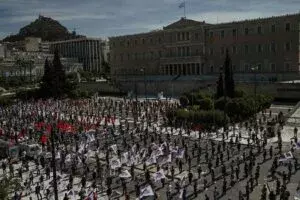
[2] “Shoulder to shoulder against fascism” is one of the oldest and best-known slogans of the antifascist and socialist movements in Turkey. During the 2000s, the LGBTI+ movement “jammed” the slogan as “Legs on shoulder against fascism.”
[3] See Joshua Clover, Riot. Strike. Riot: The New Era of Uprisings (London: Verso, 2016).
[4] Judith Butler, Notes Toward a Performative Theory of Assembly (Cambridge, MA: Harvard University Press, 2015), p. 8.
[5] See Begüm Özden Fırat, “Drones and Streets: Iconic Images of the Tahrir and Gezi Occupations” in Art and Activism in the Age of Systemic Crisis: Aesthetic Resilience, Bram Ieven, Eliza Steinbock and Marijke de Valck, eds. (London: Routledge, 2020).
[6] “Bir aradayız! Buradayız!,” Taksim Dayanışması (blog), 27 May 2016,taksimdayanisma.org
[7] “Istanbul Pride Banned: Organizers Statement,” ERA-LGBTI (website), 07 July 2016,www.lgbti-era.org
[8] Zachary Davies Boren, “Spain’s hologram protest: Thousands join virtual march in Madrid against new gag law,” Independent, 12 April 2015,www.independent.co.uk
[9] Elian Peltier, “With Marches Banned, Shoes Carry a Message,” New York Times, 29 November 2015,www.nytimes.com
[10] See the spreadsheet “Methods of Dissent & Collective Action Under COVID” for a growing list of protest forms during the pandemic: docs.google.com/spreadsheets/d/179hz-OKrfcAr3O0xi_Bfz9yQcK917fbLz-USxPZ3o_4/edit#gid=0.
[11] Emma Wallis, “‘Leave No One Behind’: Protests for migrants in times of coronavirus,” Infomigrants, 6 April 2020,www.infomigrants.net
[12] Marissa J. Lang, “A D.C. protest without people: Activists demand PPE for health care workers on front line of coronavirus pandemic,” Washington Post, 17 April 2020, www.washingtonpost.com/local/a-dc-protest-without-people-activists-demand-ppe-for-health-care-workers-on-front-line-of-coronavirus-pandemic/2020/04/17/e4a915b4-80d6-11ea-a3ee-13e1ae0a3571_story.html.
[13] Max Bernhard, “On lockdown, Hong Kong activists are protesting in Animal Crossing,” Wired, 7 April 2020,www.wired.co.uk
[15] Josh Breiner, “Two Thousand Israelis Brave Coronavirus Fears to Protest Assault on Democracy,” Haaretz, 19 April 2020,www.haaretz.com
[16] “Police clash with residents in Paris suburbs amid lockdown,” France 24, 20 April 2020,www.france24.com
[17] “Coronavirus: Brazil’s Bolsonaro joins anti-lockdown protests,” BBC News, 20 April 2020,www.bbc.com
[18] Josh K. Elliott, “‘Go to China!’: ‘Nurses’ hailed for blocking anti-quarantine ‘Karen’ at coronavirus protest,” Global News, 20 April 2020,globalnews.ca
[19] See Fridays for Future,fridaysforfuture.org
[20] The One Minute of Darkness for Constant Light demonstrations were initiated on 1 February 1997, following the Susurluk car crash, which revealed hidden ties between the government, the armed forces, and agents of the deep state.
[21] On 15 July 2016, a coup d’état against state institutions was attempted in Turkey. During the night of the coup, the General Directorate of Religious Services published a decree ordering all imams to recite the salah constantly from minarets and loudspeakers with a message from the president of the Directorate “asking the citizens to counter the coup without applying violence.”
[22] See, for example, David Harvey, “Anti-Capitalist Politics in the Time of COVID-19,” Jacobin, 20 March 2020,jacobinmag.com
[23] “There is such a thing as society, says Boris Johnson from bunker,” Guardian, 29 March 2020,www.theguardian.com
[24] See, for example, the Covid-19 Mutual Aid UK directory of “local organising to support the most vulnerable in our communities”:covidmutualaid.org
[25] “28th İstanbul LGBTI+ Pride Week: Where am I?,” Bianet English, 13 April 2020,bianet.org
Related
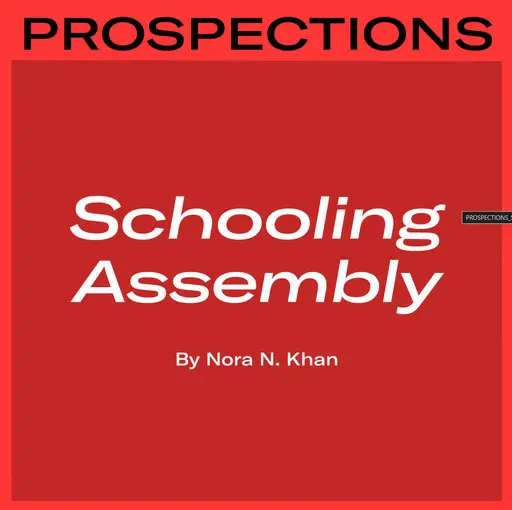
“Schooling Assembly” by Nora N. Khan traverses a year of pandemic teaching, in which faculty and students have witnessed widening cracks in the university system and its human opportunity cost calculations, and have faced new challenges in asserting creative and collective autonomies.
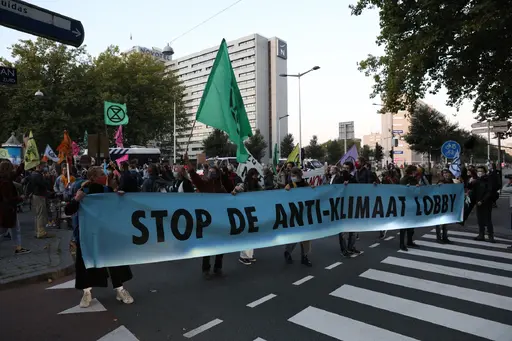
Extinction Rebellion (XR) entered the spotlight in late 2018 with a call for mass disruptions, followed by a first wave of actions which saw thousands come together to block major bridges in London.
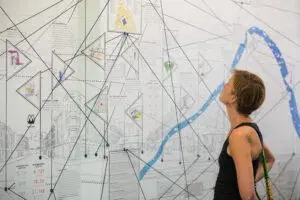
This diagram by artist Jeanne van Heeswijk depicts the story of Freehouse Radicalizing the Local, a project focusing on the struggle for the right to live well in the Afrikaanderwijk neighborhood of Rotterdam.
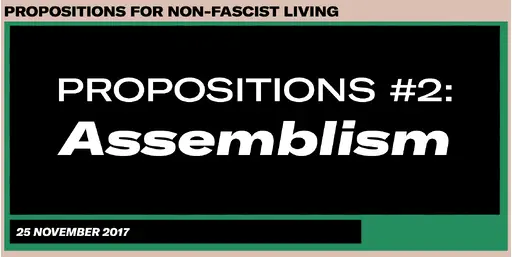
The gathering Third Assembly: After the Assembly took place as part of the daylong program Propositions #2: Assemblism, convened by BAK and artist Jonas Staal on 27 November 2017.
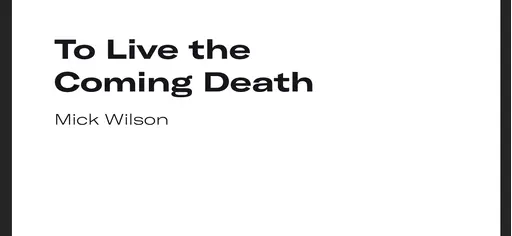
From: Propositions for Non-Fascist Living: Tentative and Urgent, Maria Hlavajova and Wietske Maas, eds. (Utrecht: BAK, basis voor actuele kunst and Cambridge, MA: MIT Press, 2019), pp. 165-179
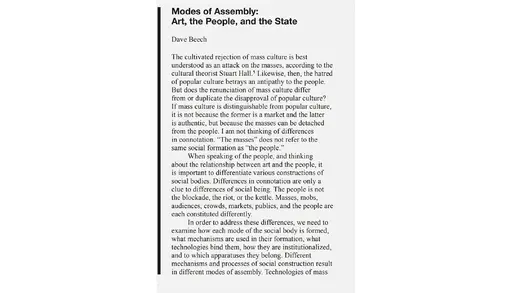
From: FORMER WEST: Art and the Contemporary After 1989, Maria Hlavajova and Simon Sheikh, eds. (Utrecht: BAK, basis voor actuele kunst and Cambridge, MA: MIT Press, 2016), pp. 559-569

"We were in the streets for the Feminist Night March on 8 March, exactly three days before the first Covid-19 case was officially declared in Turkey..." Read the translation of an essay originally published in Turkish on 1+1 Forum, 30.04.2020.